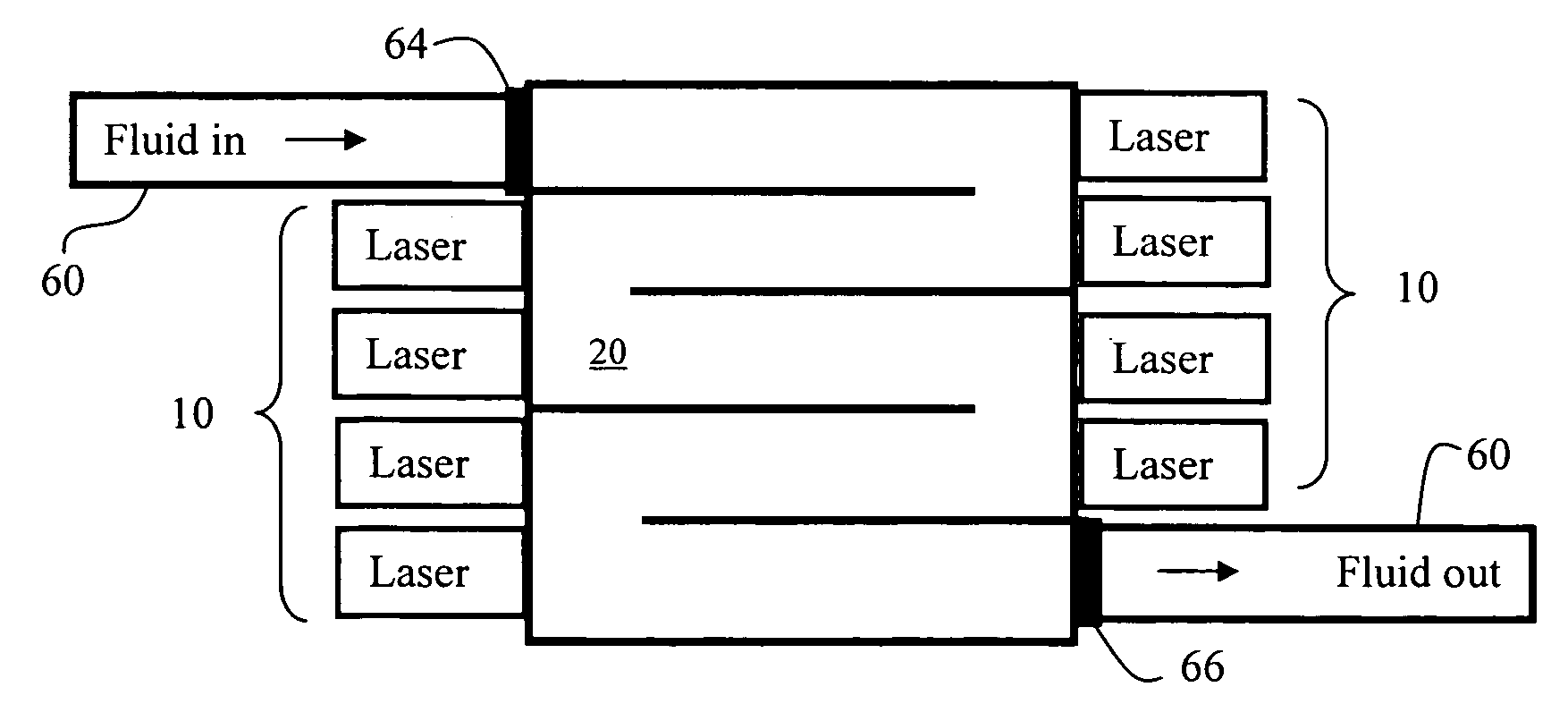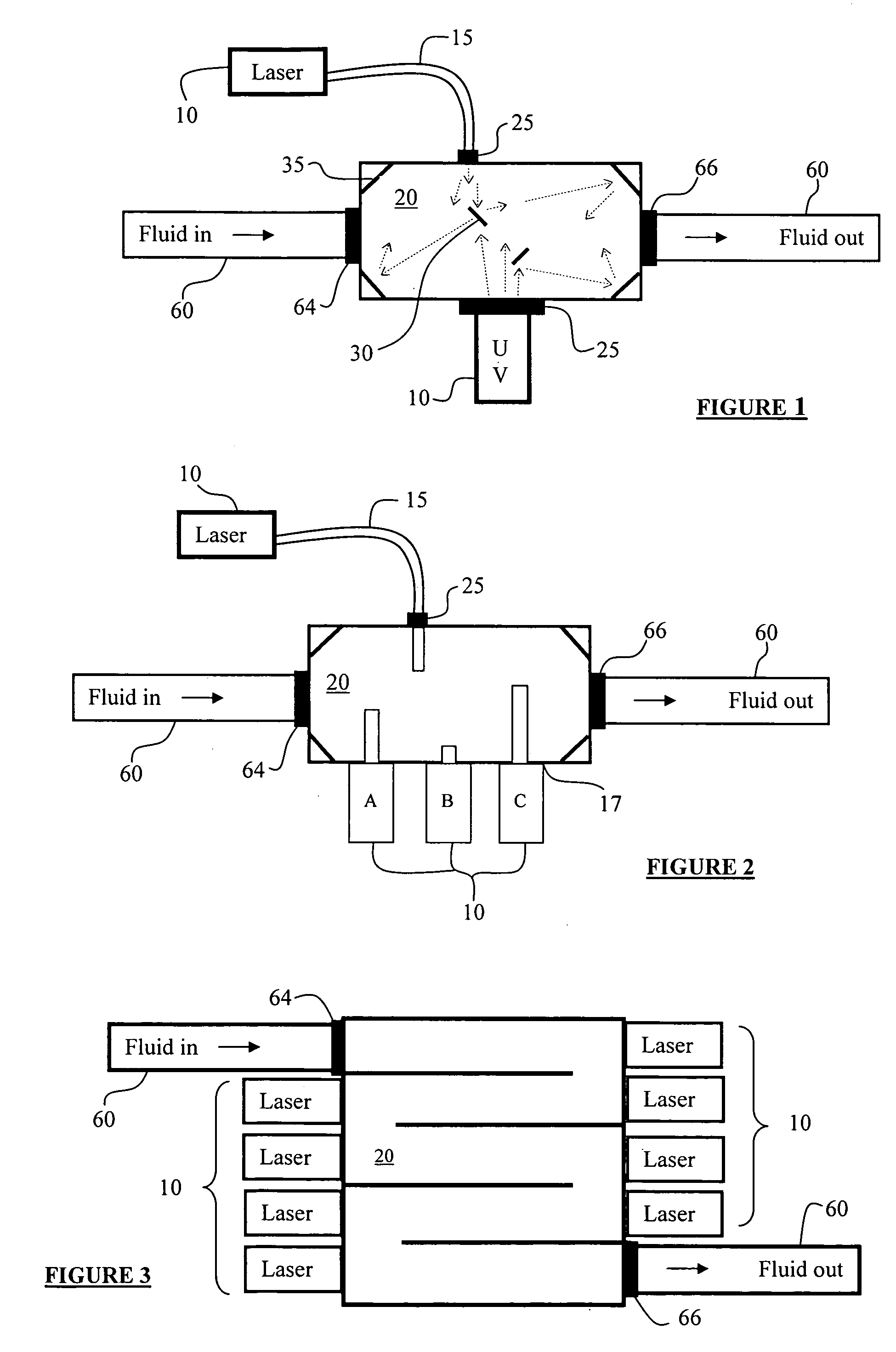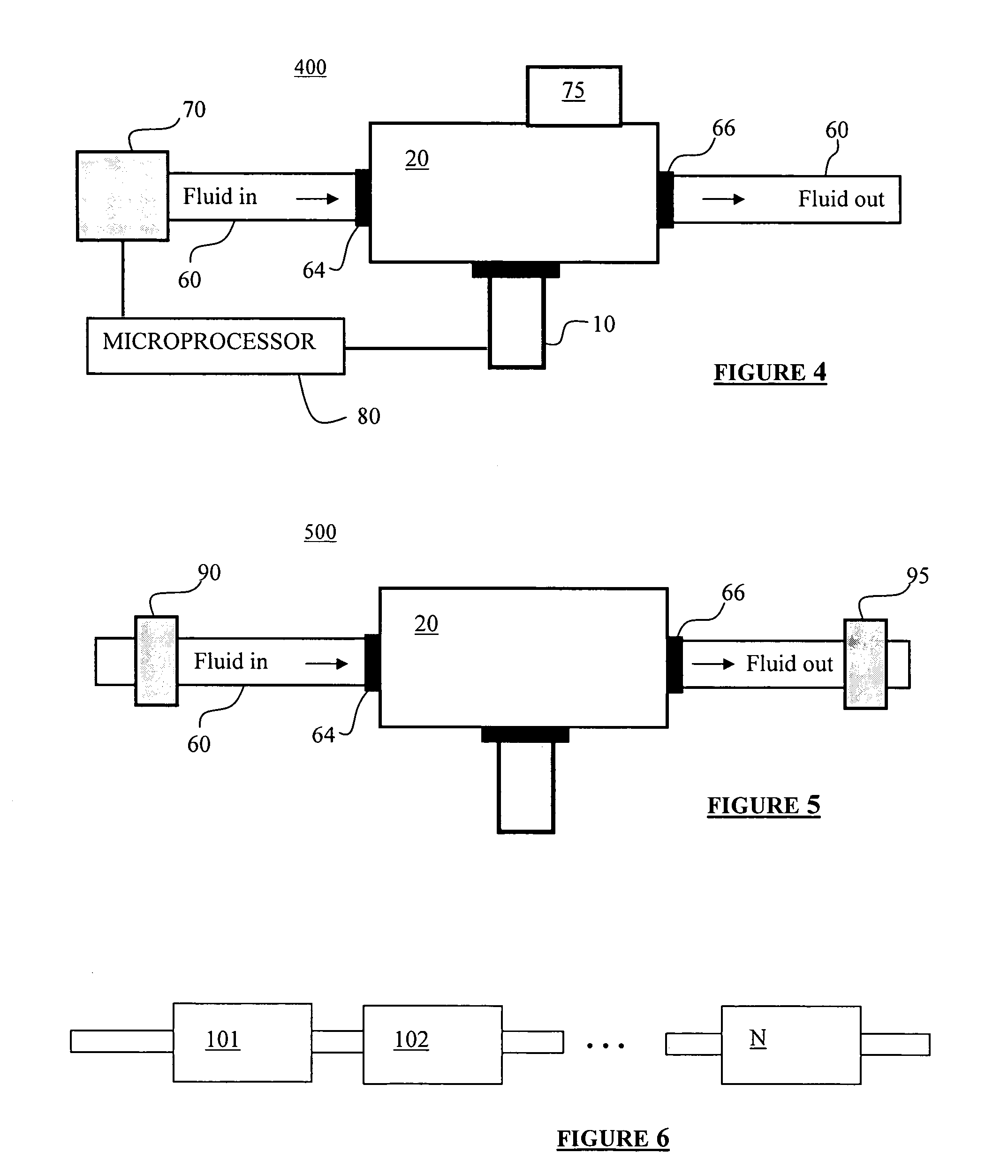Systems and methods for contaminant detection within a fluid, ultraviolet treatment and status notification
a technology of contaminant detection and fluid, applied in the field of liquid treatment systems and methods, can solve the problems of large number of casualties, increased risk of terrorist attacks, and increased risk of insertion of biological agents into water supplied to u.s. communities, so as to reduce the infectivity of microorganisms, kill or disable harmful effects of some microorganisms, and disable the dna of harmful microorganisms
- Summary
- Abstract
- Description
- Claims
- Application Information
AI Technical Summary
Benefits of technology
Problems solved by technology
Method used
Image
Examples
Embodiment Construction
[0046]The following description is presented to enable persons skilled in the art to make and use the invention, and is provided in the context of particular applications and its requirements. Various modifications to the disclosed embodiments will be readily apparent to those skilled in the art, and the general principles defined herein may be applied to other embodiments and applications without departing from the spirit and scope of the present invention.
[0047]Thus, the present invention is not intended to be limited to the embodiments shown, but is to be accorded the widest scope consistent with principles and features disclosed herein. Although preferred embodiments of the present invention are described herein, those skilled in the art can appreciate that a number of varying embodiments may be implemented in accordance with the present invention.
[0048]The following U.S. Patents and Application documents are incorporated herein by reference for their teachings:[0049]U.S. Pat. N...
PUM
| Property | Measurement | Unit |
|---|---|---|
| wavelengths | aaaaa | aaaaa |
| wavelengths | aaaaa | aaaaa |
| wavelength | aaaaa | aaaaa |
Abstract
Description
Claims
Application Information
 Login to View More
Login to View More - R&D
- Intellectual Property
- Life Sciences
- Materials
- Tech Scout
- Unparalleled Data Quality
- Higher Quality Content
- 60% Fewer Hallucinations
Browse by: Latest US Patents, China's latest patents, Technical Efficacy Thesaurus, Application Domain, Technology Topic, Popular Technical Reports.
© 2025 PatSnap. All rights reserved.Legal|Privacy policy|Modern Slavery Act Transparency Statement|Sitemap|About US| Contact US: help@patsnap.com



